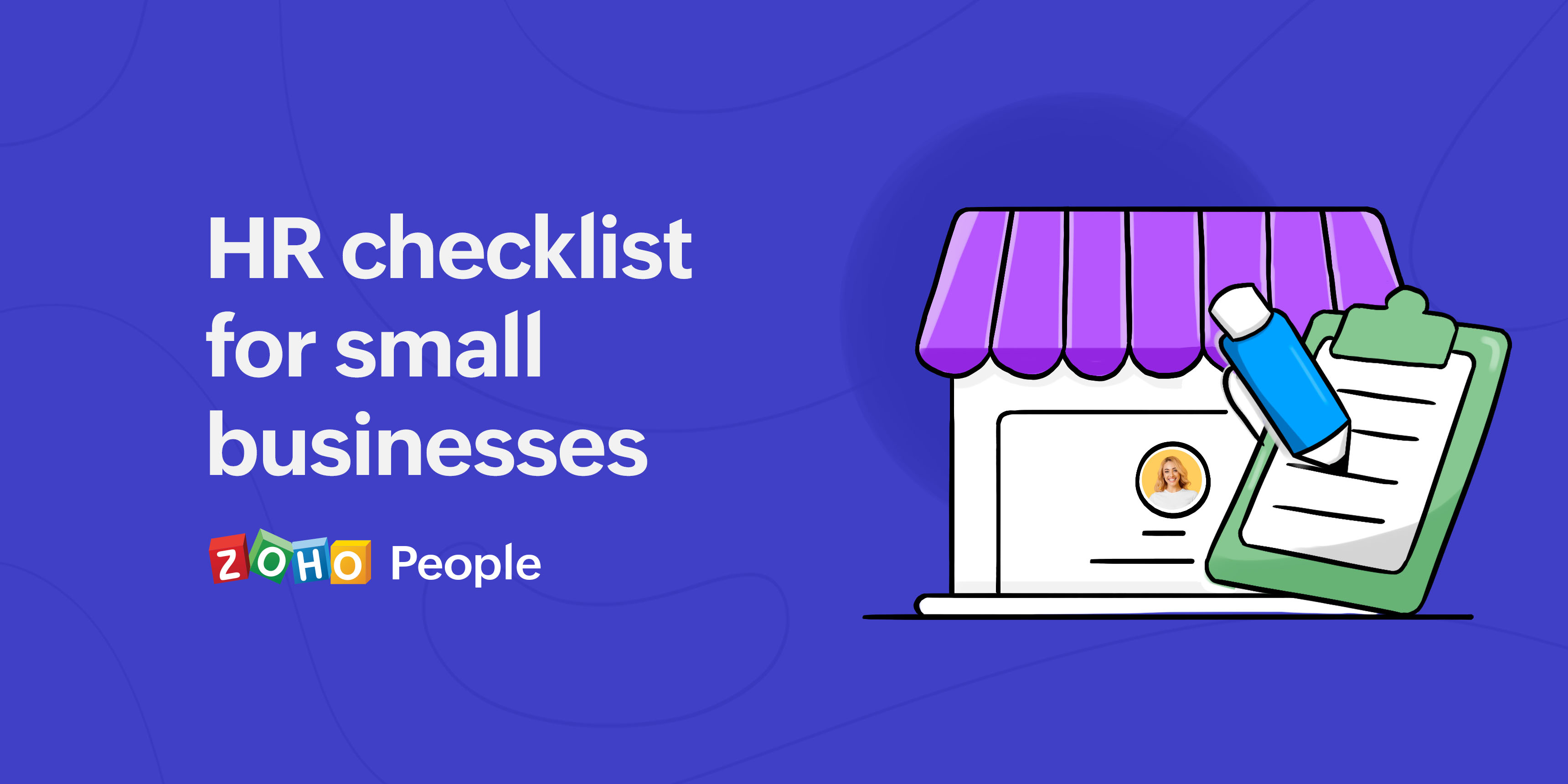- HOME
- HR insights
- A complete HR checklist for small businesses and startups
A complete HR checklist for small businesses and startups
- Last Updated : August 23, 2023
- 2.9K Views
- 4 Min Read

As a professional managing HR processes for a small business or startup, you probably have a lot on your plate. At some point, it can get overwhelming, and you may even neglect to complete a few HR functions. This can sometimes lead to costly consequences, especially when it involves compliance-related activities like attendance, payroll, and leave. To save your organization from the administrative burden and hefty fines, we've created a checklist of everything you must do to maintain smooth HR operations.
Recruitment
□ Assess your organization's hiring needs and talent necessities.
□ Create job openings and advertise them both internally and externally on job boards, social media, and careers pages.
□ Shortlist applications and schedule interviews with candidates.
□ Decide on the interview format that works best for your organization and hold interviews.
□ Select candidates, run background checks and generate offer letters.
□ Fill out paperwork like I-9 and W-4 forms based on regional and national laws.
Onboarding
□ Manage paperwork like employment contracts, job acceptance letters, proofs of identity, etc.
□ Allocate a desk for all onboarding paperwork.
□ Make sure new employee devices, software, and login credentials are ready.
□ Send a warm welcome message to your new employees on their first day.
□ Introduce them to their team members.
□ Organize an orientation program that provides complete information about your organization, its culture, and other practices.
□ Conduct a meeting with immediate managers to set clear expectations and clarify new employee goals and responsibilities.
□ Offer new hire training programs that provide theoretical and practical knowledge.
□ Do regular check-ins with new employees and collect feedback after a week and a month.
Attendance and time management
□ Decide if you want a stricter or more flexible attendance policy for your organization.
□ Set clear expectations for working hours, overtime, and permissions.
□ Define shifts and assign them to your employees.
□ Decide on disciplinary actions for employees who don't follow the attendance rules.
□ Determine how daily attendance will be tracked at your organization.
□ Ensure that your employees are aware of the attendance policy.
Leave management
□ Get a thorough understanding of the applicable national and regional leave policies.
□ Decide on the different leave types you will offer your employees and the amount of leave allotted under each leave type.
□ Adopt an intuitive leave management system to track and manage employee leave.
□ Create a handbook that provides detailed information to employees about their leave entitlement, how they can apply for leave, how many days in advance they should apply, who will approve their requests, etc.
□ Develop a holiday calendar at the beginning of each year and distribute it to employees.
Payroll processing
□ Obtain an Employer Identification Number for your organization.
□ Open all the necessary bank accounts to manage salaries and taxes.
□ Classify employees based on their employment type.
□ Collect the necessary information from employees like tax forms, bank details, etc.
□ Decide how you will track employee attendance and leave.
□ Calculate gross wages and other applicable deductions and taxes.
□ Calculate the final net pay of each of your employees and deposit it in their accounts
□ Document the necessary payroll documents based on your regional and national payroll laws.
Performance management
□ Decide how often you want to conduct performance reviews to keep your employee's goals aligned with your organizational needs.
□ Encourage managers to set clear goals, objectives, and expectations for their employees during the beginning of a performance period.
□ Prepare for performance reviews well ahead of time by analyzing every aspect of employee performance.
□ Devise constructive feedback that helps employees understand their strengths and weaknesses.
□ Let employees ask questions and share their feedback during the performance reviews.
□ Discuss the plan for the upcoming performance period.
□ Identify different ways in which employees can improve their performance and offer training opportunities to help them gain new skills.
□ Provide suitable rewards, compensation, promotions, and bonuses based on your organizational culture and processes.
Exit process
□ Receive a formal resignation letter from your employee stating the reason for their resignation and their last working day.
□ Keep the entire team informed about the exit and facilitate knowledge transfer.
□ Inform the IT team to ensure company gadgets are recovered from the exiting employee and their login access to your software tools is revoked on their last day at work.
□ Inform your payroll team to make sure the final settlement is appropriately provided.
□ Conduct an exit interview to understand the reason why the employee is leaving and improve your employee management practices.
□ Document all the necessary information about your employee's exit.
□ Be sure to collect their ID card and revoke the employee's access to your company's premises on their last working day.
Wrapping up
Being a part of the HR team means managing every step of an employee's journey to avoid compliance issues and ensure optimal engagement. We hope this blog post helps you get started with or continue on your HR operations journey with confidence!
 Tarika
TarikaContent Specialist at Zoho People


